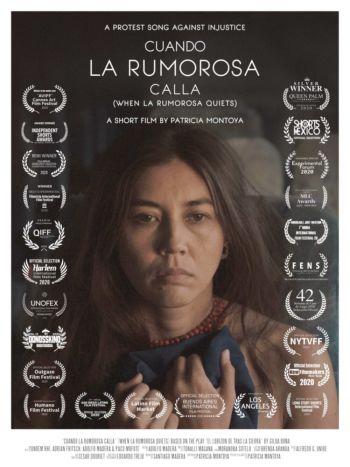September 23, 2022 Community Stories
National Hispanic Heritage Month: Reflections from Northampton Filmmaker Patricia Montoya
Starting on September 15 each year, Americans observe National Hispanic Heritage Month. It’s a time to celebrate the histories, cultures and contributions of American citizens whose ancestors came from Spain, Mexico, the Caribbean and Central and South America.

It seems the perfect time to introduce you to award-winning filmmaker Patricia Montoya. A native of Medellin, Colombia, she now resides in Northampton and teaches in the Five College Consortium. Montoya’s films draw on her bi-national identity and experiences living near the U.S./Mexico border.
With a Project Evolution Grant in hand from the Community Foundation’s ValleyCreates program, Montoya is producing a new short film, “HORSE.” Look for it at film festivals in 2023!
To mark National Hispanic Heritage Month, Montoya shared her reflections with us:
Q: Why is it important to tell the stories of Latinx immigrants?
Montoya: We have a long history with the United States. We’ve been coming here for generations. We bring with us our stories and culture and those become part of the U.S. culture. So that is very powerful. And I see it as an interconnected thing. It’s not only that we are immigrating here, but the U.S. has had a lot of impact on our economies and on our culture.
Q: Your storytelling often centers on themes of “migration, memory and identity.” Why are those themes so important to you?
Montoya: We, as immigrants, are uprooted from our places of birth and our cultures to come here. I felt like I was snatched out of Colombia to go to New York City [at age 16]. It took me many, many, many years…I still sometimes don’t feel part of here.
Memory…The loss of my friends was the thing that hurt me for a long time. I needed to learn to make new social networks, and that’s taken awhile.
Identity…I will always be Colombian, but it’s more than that now. It’s becoming part of a larger Latinx community. That was the thing that saved me, in a way — to understand that there were other people I had to learn from: the Puerto Ricans, Dominicans, Cubans and Mexicans. I had a sense of belonging to this larger community of people and that was really exciting. There were struggles I could attach myself to. The moment when I discovered that and when I took on the identity of Latinx, I felt more part of the United States.
Q: You did graduate work in San Diego and thesis work in Tijuana. While there, you said you “fell in love with the border and it’s many stories.” You tend to focus on difficult topics. What motivates you to tell those stories in your films?
Montoya: The border fence goes into the ocean. One of my professors at UC San Diego would say, ‘Well, this is the end of Latin America and the beginning of the United States.’ It’s the end of one thing and the start of another, depending on which side of the fence you sit. That’s what did it for me. I thought, ‘This is where my work is.’ On the one side of the fence is the United States, with the desire to ever grow and expand and conquest. What does that do to the people on the Mexican side? And what happens to people in the middle — people like me? We are from here and there, and we’re able to navigate both worlds and experiences.
When I’m there it feels like I’m at the center of the action. It is a real place for me. I created relationships there and I feel comfortable there.
The border fence area is violent. Violence is part of my upbringing. Colombia is wonderful and beautiful, but it is a very violent country. I didn’t personally experience violence, but I witnessed it through the news or outside the window or in the environment. How do children experience that? That’s my new piece, “HORSE.” I connect the commonalities between Tijuana and Medellin, and the story is how children witness violence in the way it was for me.
Some responses have been lightly edited for space reasons.